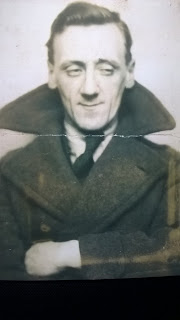FridayFiction - Embodiment
I am collaborating with The Butterfly Effect on an experiment we call "#FridayFiction". We post something once a fortnight... and this is my latest:
I’ve been thinking about the body. We all have one. And the Covid-19 pandemic exposes us to this truth: no matter our knowledge economy, no matter our technologies and trinkets, no matter our insights and strategies, in the end we are but frail flesh.
I’ve been thinking about the body. We all have one. And the Covid-19 pandemic exposes us to this truth: no matter our knowledge economy, no matter our technologies and trinkets, no matter our insights and strategies, in the end we are but frail flesh.
What does
fiction have to say about this? I
experience a curious dilemma. Fiction,
after all, is an archetypically ‘head’ thing.
We don’t walk or somersault or dance a book: we read it. (The wonderful Adam
Phillips proposes
that fiction and psychotherapy are in this key respect the same – they are both
‘talking
cures’.)
Is it
possible for a ‘head’ thing properly to capture embodiment? Examples in fiction seem few and far
between. Two, however, jumped at me from
the shelf, and spoke to each other as well as to me.
The first is
‘Hunger’ by Knut
Hamsen. The Norwegian went on to win
the Nobel Prize for Literature but, in 1890 when ‘Hunger’ was first published,
Hamsen was no more than a 31-year old labouring peasant. The book is regarded by many as one of the
very earliest ‘modern’ novels, and certainly its style and focus feel very
different from much else that was being written in the late nineteenth
century. And it’s true, too, that much
of the book is concerned with psychic breakdown – that is, ‘head stuff’.
But its
entire premise is grounded in the corporeal: what could be more physical than
to go hungry? To have one’s body
progressively reduced through starvation? To discover just how dependent the
mind is upon the body?
The book’s
cousin, published more than a century later, is ‘White Hunger’ by Aki Ollikainen. Published in its original Finnish in 2012,
the book tells the story of the devastating 1867 famine in Finland through the
tale of a farmer’s wife and her two children leaving home in search of
food. In this case the hunger afflicts
an entire culture not just an individual, and it is at times an agonising
read. But the connection from the
mental, the psychological, the spiritual to the blunt realities of the body,
the limbs, the guts is again laid bare. It
is impossible to read this book and not become acutely aware of one’s bodily
state.
Neither of
these books is an ‘easy’ read. But, at
this time of corporeal peril, when so many are retreating into their heads, it
may be more important than ever to confront material realities. These works of fiction may help to do this:
they may also serve to remind us that we have more to learn from Scandinavia
than mere hygge.



Comments